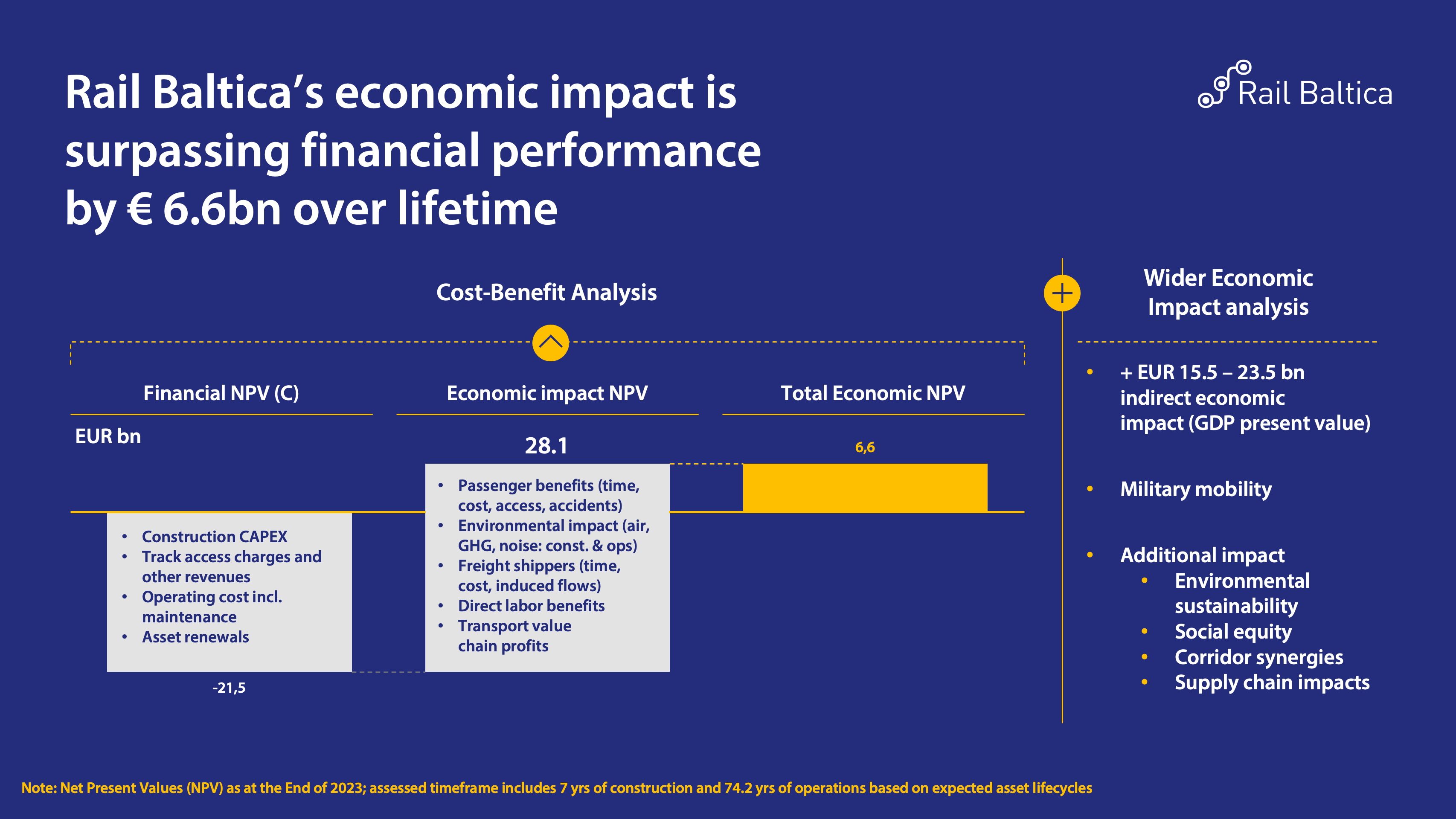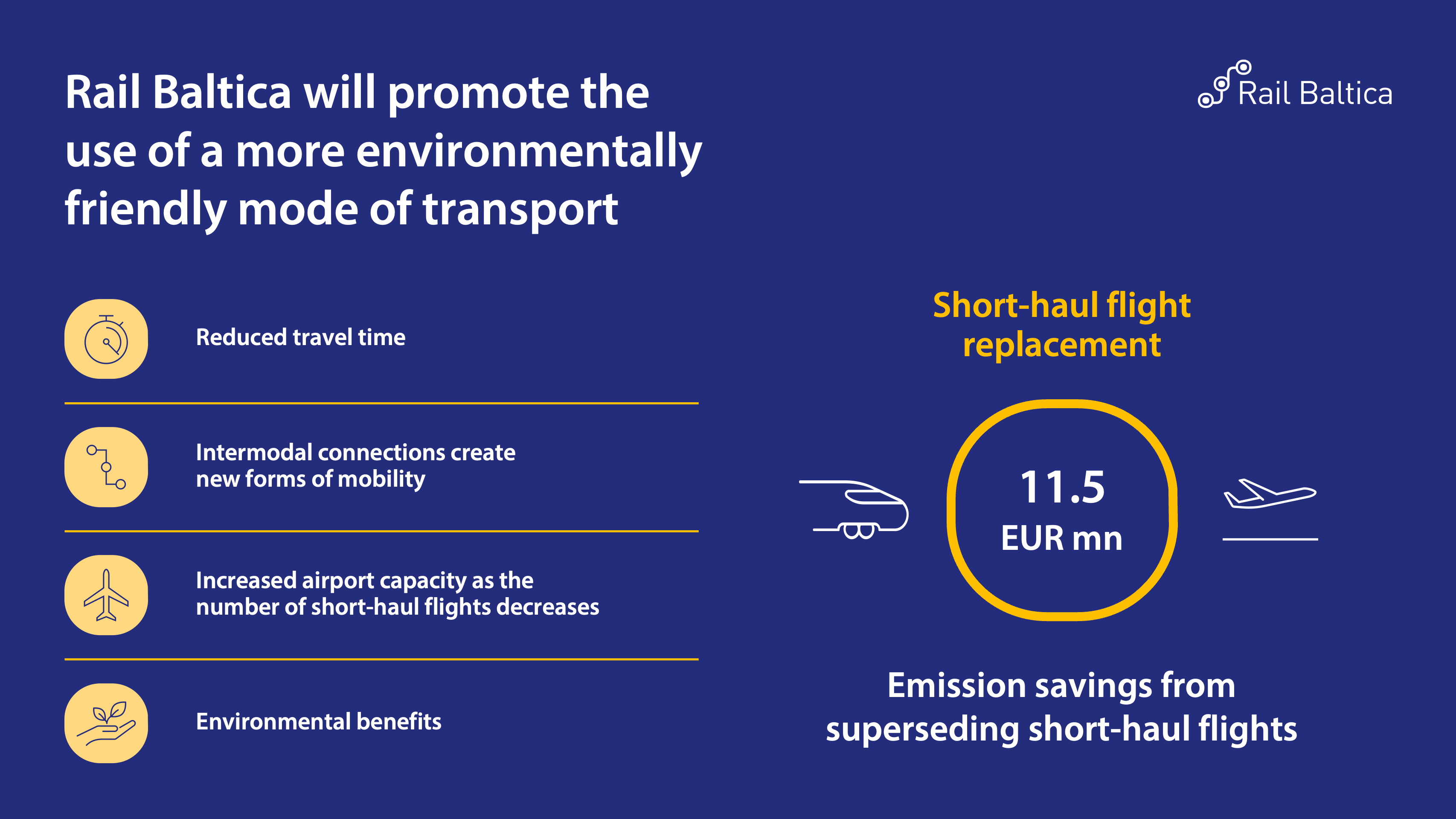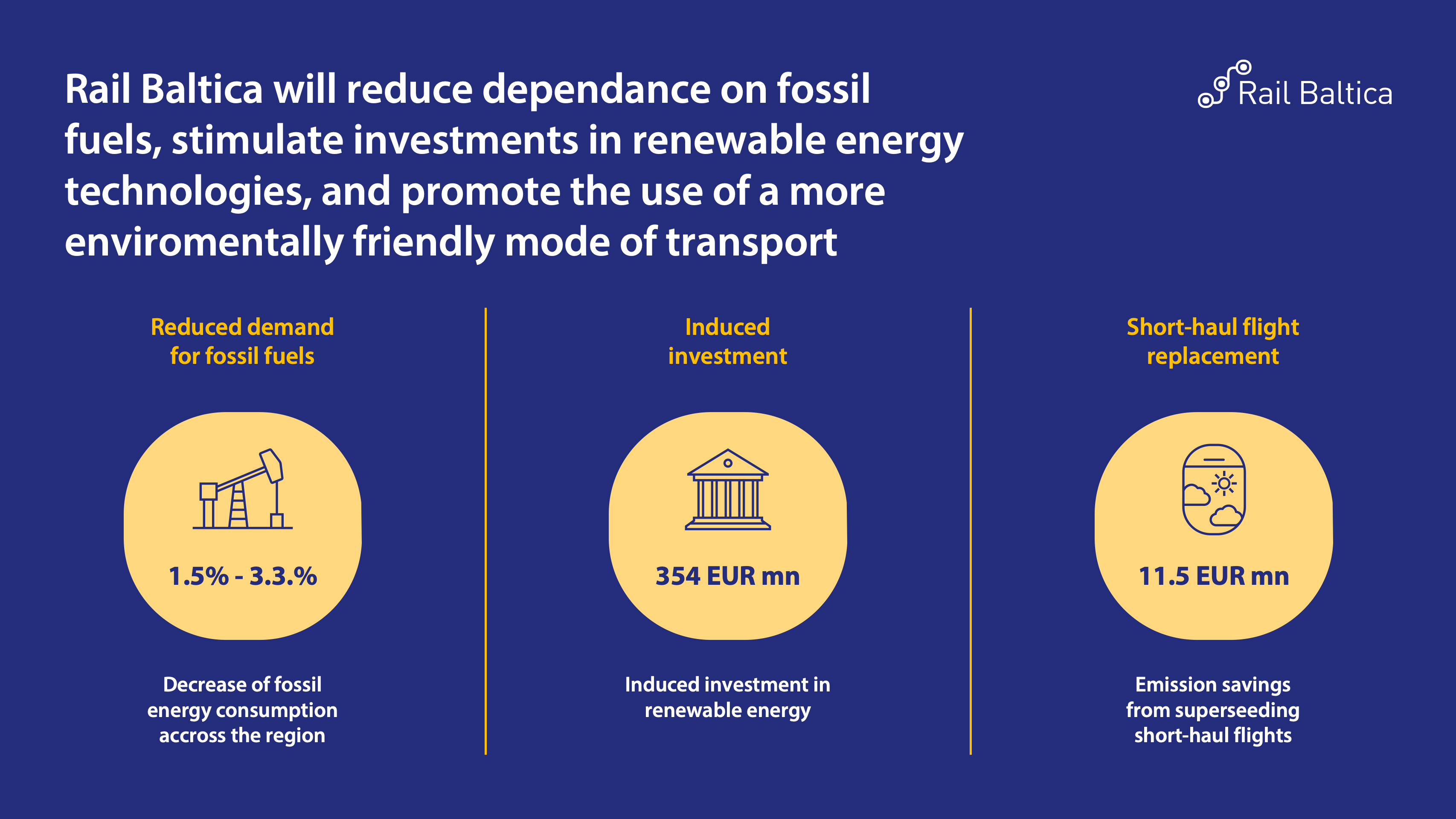The findings of the updated Cost-Benefit Analysis (2024) suggest that Rail Baltica is economically viable and expected to generate GDP growth from 0,5 to 0,7% contributing 15.5 to 23.5 billion EUR to GDP of the Baltic states, which is considered indirect benefits, and it will also additionally have a direct economic net benefits value of 6.6 billion EUR. The related broader economic benefits include military mobility, environmental sustainability, social equality, corridor synergies, and supply chain impacts.

The key findings of the study estimate that passenger transport is expected to generate 80% of Rail Baltica’s benefits, with environmental improvements accounting for 14%, and freight transport contributing 5%. The project will integrate the Baltic region into the European railway network, boosting GDP growth by 0.5-0.7 percentage points annually. Key growth contributors include land value appreciation, tourism, new business development, labor productivity, competitiveness, and urban development. It is estimated that Rail Baltica will handle 51.7 million passenger trips and 10.9 million tons of cargo by 2046.


Rail Baltica supports trade flows affected by geopolitical events, such as Russia’s war on Ukraine, and aids Ukraine’s reconstruction. It enhances energy security by shifting from fossil fuels to renewable energy, reducing consumption by 1.5-3.3%, and supporting net-zero emissions by 2050. The project also improves environmental and traffic safety by reducing pollution and accident risks. It promotes economic development and supports EU transport objectives by integrating global supply chains, facilitating goods movement to international markets, and building the resilience of the Baltic region. The project will enhance social equity by providing affordable transportation for 351,000 low-income residents and high-quality rail services for 59,000 passengers with reduced mobility. Rail Baltica enhances regional defense and security by providing EU standard-gauge 1435 mm infrastructure for passengers, freight, and military mobility. It improves military logistics, increases traffic infrastructure capacity, and ensures compatibility with the 1435 mm railway network.
